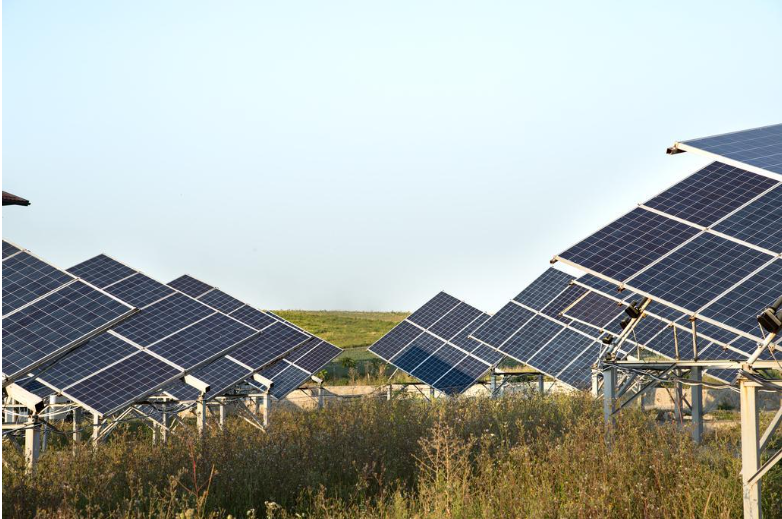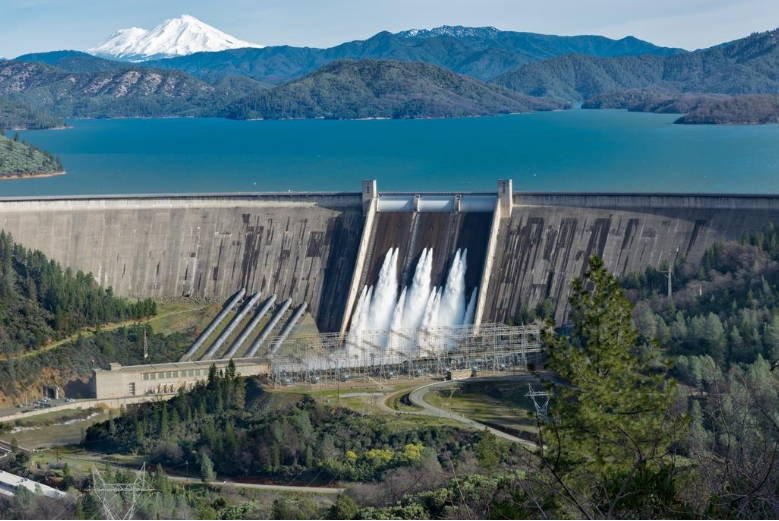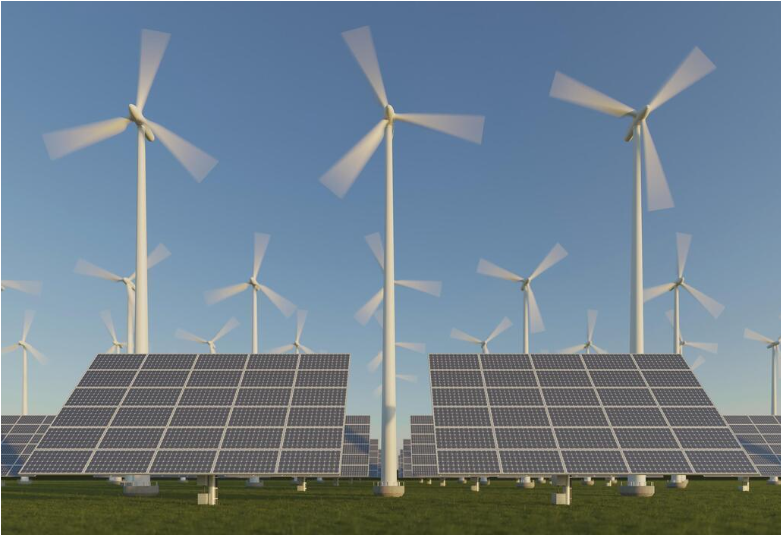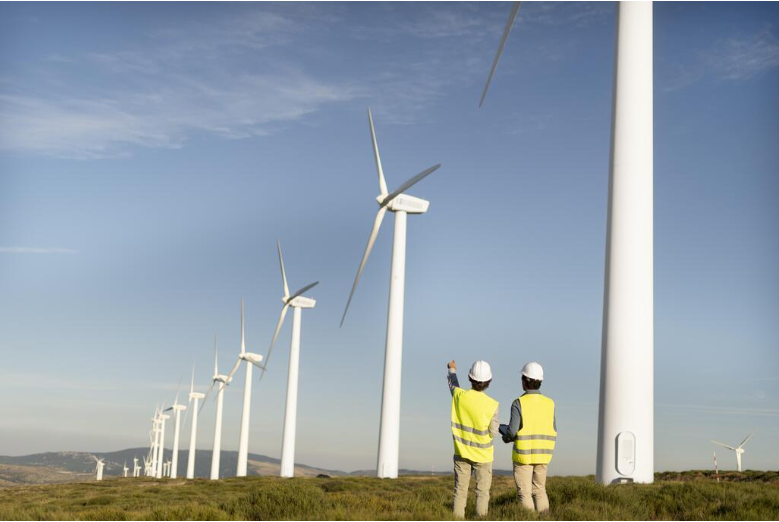Trends in Vietnam's energy and renewable energy industry
Exploring Key Trends in Vietnam’s Energy and Renewable Energy Industry
What is driving the rapid change in Vietnam’s energy sector? With rising demand and strong government support, the Vietnam industry is embracing new opportunities in renewable energy. This article covers the latest trends in Vietnam's energy and renewable energy industry, including solar and wind power growth, smart grid technology, and key challenges. Discover how these shifts impact factories and businesses in this fast-growing market.
Overview of Vietnam’s Energy and Renewable Energy Landscape

Overview of Vietnam’s energy and renewable landscape (Source)
Vietnam's energy sector is rapidly evolving, driven by industrial growth and a strong push toward sustainability. This transformation reshapes the Vietnam industry landscape, attracting global attention and investment.
Current Energy Demand and Key Sectors Driving Growth
Vietnam's energy consumption has surged, with electricity output reaching 280.6 billion kWh in 2023—a 4.56% increase from the previous year. This growth is fueled by the expanding manufacturing sector, particularly in northern industrial zones, which supply global tech firms.
To meet this demand, coal-fired power remains predominant, accounting for 46.2% of electricity generation 2023, despite comprising only 33.2% of power sources. Consequently, thermal coal imports rose by 31% in 2024, totaling 44 million metric tons.
Role of Government Policy and National Energy Strategy
The Vietnamese government has outlined ambitious goals in its National Energy Master Plan for 2021–2030. Targets include achieving a total primary energy supply of 155 million tons of oil equivalent by 2030 and increasing renewable energy's share to 15–20% by the same year. By 2050, renewables are expected to contribute 80–85% of the energy mix. The plan also emphasizes energy conservation, aiming for an 8–10% reduction in consumption by 2030 compared to business-as-usual scenarios.
Key Players and Investment Trends in Vietnam's Energy Market
State-owned enterprises like Vietnam Electricity (EVN) and PetroVietnam (PVN) dominate the energy sector. EVN reported a consolidated revenue of $22.5 billion in 2024, marking a 14.3% increase from the previous year. PVN continues to expand its operations, including the O Mon IV Power Plant project, valued at $699 million and expected to commence operations in 2028. International investors are also active; for instance, Mitsui & Co. plans to invest approximately $740 million in a gas project in Vietnam.
Major Trends in Vietnam’s Renewable Energy Industry
Vietnam's renewable energy sector is experiencing significant growth, positioning the Vietnam industry as a leader in sustainable energy within Southeast Asia.
Rise of Solar Power and Photovoltaic Adoption

Rise of solar power (Source)
By the end of 2023, Vietnam's total installed solar capacity reached approximately 80,555 MW, with rooftop solar installations contributing over 9,000 MW. The government aims to have 50% of office buildings and homes equipped with rooftop solar panels by 2030. To facilitate this, a plan has been proposed to purchase excess rooftop solar power at a rate of 671 dong ($0.0264) per kWh.
Wind Energy Development: Onshore and Offshore

Wind energy development (Source)
The wind energy sector has also seen significant advancements, with installed capacity surpassing 7 GW by late 2023. Onshore wind projects have been the primary contributors, supported by favorable policies and investment incentives. Offshore wind development is gaining momentum, with plans to install 6 GW capacity by 2030. Major projects, such as the proposed $4.6 billion offshore wind farm in Binh Dinh province, highlight the potential for offshore wind energy.
Growth of Biomass and Waste-to-Energy Projects
In 2023, biomass energy production in Vietnam was approximately 853 million kWh, accounting for 0.3% of the country's total power generation. Agricultural residues, such as sugarcane bagasse, are primary fuel sources. Additionally, waste-to-energy projects are underway, including a facility in Hanoi/Ho Chi Minh City designed to process 2,000 tons of waste per day.
Hydropower: A Mature but Still Vital Component

Hydropower (Source)
Hydropower remains a cornerstone of Vietnam's renewable energy portfolio, with a total installed capacity exceeding 22 GW as of late 2023. Major hydropower plants, such as Hoa Binh and Son La, play a crucial role in electricity generation and grid stability. Despite the maturity of this sector, there is still potential for expansion, particularly through small and medium-sized hydropower projects.
Transition to Smart Grids and Energy Storage Systems
Vietnam is advancing towards modernizing its power grid, aiming for 95% deployment of electronic meters with remote measuring capabilities by 2030. The country is also exploring Battery Energy Storage Systems (BESS) to enhance grid stability and support the integration of renewable energy sources.
Opportunities for Businesses in Vietnam’s Energy Transition
Vietnam's energy transition offers significant opportunities for businesses, driven by supportive policies and increasing demand for sustainable solutions. This shift is reshaping the Vietnam industry, creating avenues for innovation and investment.
Growth Potential in Solar Panel Manufacturing and Services

Growth potential in solar panel manufacturing (Source)
Vietnam's solar energy market is projected to grow from 18.80 GW in 2024 to 20.76 GW by 2029, at a CAGR of 1.98%. The country receives 2,000 to 2,500 hours of sunshine annually, making it ideal for solar energy production. This growth presents opportunities in manufacturing, installation, and maintenance services.
Demand for Energy-Efficient Technology and Smart Grid Solutions
Vietnam aims to reduce energy consumption by 15% in 2030 compared to business-as-usual levels. This goal drives demand for energy-efficient technologies like intelligent air conditioning systems and smart grids. Businesses offering these solutions can tap into a growing market.
Green Financing and Sustainability-Linked Investment Channels

Green financing (Source)
Vietnam's green finance sector is expanding, with institutions like BIDV issuing a $104 million green bond in 2023—the first of its kind by a local commercial bank. Additionally, the country plans to launch a mandatory domestic carbon market, with a pilot phase between 2025 and 2028, creating new investment opportunities in carbon credit trading.
Regional Integration and Export Opportunities in ASEAN
Vietnam is actively participating in regional energy initiatives. In 2023, Sembcorp and PTSC signed a letter of intent to export 1.2 GW of renewable energy to Singapore, potentially commencing by 2033. These efforts are part of the broader ASEAN Power Grid vision to enhance energy connectivity and reliability across Southeast Asia.
Challenges Facing Vietnam’s Renewable Energy Development
Vietnam's renewable energy sector is poised for growth, yet several challenges impede its progress. Addressing these issues is crucial for the Vietnam industry to achieve its sustainable energy goals.
Grid Overload and Infrastructure Limitations

Grid overload (Source)
Rapid expansion in renewable energy, particularly solar and wind, has outpaced Vietnam's grid infrastructure. In 2020, approximately 364 GWh of solar energy was curtailed due to grid congestion, leading to significant financial losses. The lack of adequate transmission systems, especially in central and southern regions, hampers the efficient distribution of renewable power to meet northern demand.
Regulatory Uncertainties and Licensing Delays
Frequent policy changes and unclear regulations have created an unpredictable environment for investors. In 2023, compliance inspections revealed violations in renewable energy project management, leading to operational challenges. The introduction of new electricity laws aims to address these issues, but delays in implementation continue to hinder progress.
Financing Hurdles for Small and Medium Enterprises (SMEs)

Financing hurdles (Source)
SMEs play a vital role in the Vietnam industry, yet they face significant challenges in accessing financing for renewable energy projects. A lack of innovation support and limited access to capital hinder their ability to contribute effectively to the energy transition. This financial gap restricts the growth and diversification of renewable energy initiatives.
Skills Gap and Workforce Training Needs
The rapid evolution of the renewable energy sector has outpaced the development of a skilled workforce. Between 2022 and 2023, the recruitment rate for workers with at least one green skill doubled to 22.4%, yet such workers comprised only 12.3% of the workforce. This disparity highlights the need for enhanced vocational training programs to equip workers with the necessary skills for the growing green economy.
The Future Outlook for Vietnam’s Energy and Renewable Landscape

The future overlook (Source)
Vietnam's energy future is poised for significant transformation, driven by ambitious targets and strategic investments. The Vietnam industry is at the forefront of this transition, aiming for sustainability and economic growth.
- Net-Zero Emissions by 2050: Vietnam plans to peak CO₂ emissions by 2030 and achieve net-zero by 2050, emphasizing a shift to renewable energy and electrification of transport and industry.
- Renewable Energy Expansion: The country aims to add 56 GW of renewable energy capacity by 2030, including 39 GW from solar and 17 GW from onshore wind, to meet its climate goals.
- Investment Opportunities: Achieving net-zero could unlock $2.4 trillion in investments across energy supply and demand sectors from 2024 to 2050, presenting vast opportunities for the Vietnam industry.
- Regional Energy Integration: Vietnam is exploring renewable energy exports to neighboring countries like Singapore and Malaysia, enhancing its role in ASEAN's energy landscape.
These developments underscore Vietnam's commitment to a sustainable energy future, positioning the Vietnam industry as a key player in the global energy transition.
How Kizuna Supports Businesses in the Energy and Renewable Energy Sectors
Kizuna is a trusted partner offering ready-built factory solutions and legal consultancy tailored to the Vietnam industry, including the fast-growing energy and renewable energy sectors.
With a strong presence in Long An province—strategically located near Ho Chi Minh City - Kizuna’s factory zones (Kizuna 1, Kizuna 2, Kizuna 3) provide high-quality, ready-to-use factories ranging from 250 to 10,000 m², ideal for companies operating in energy-related manufacturing and services.
To promote sustainable production, Kizuna's modern infrastructure is designed for green-oriented businesses, offering:
- Green-certified facilities,
- High-load flooring and stable power supply,
- On-site support services in legal, HR, and import-export procedures,
- And flexible factory expansion plans to adapt to client growth.
Kizuna is also home to notable clients in the energy and electrical components sector, such as:
- LIFTRA APS – a renewable energy company specializing in rooftop solar systems and clean energy solutions.
- Amphenol RF – a global manufacturer of radio frequency connectors, supporting the infrastructure of smart grid and telecom systems.
Businesses benefit from Kizuna’s comprehensive support in market entry, compliance, and project development, helping them seize opportunities amid the country’s rapid energy transition. Kizuna’s proactive approach and deep knowledge of government policies empower clients to stay ahead in this dynamic sector.
By bridging global investors and local regulations, Kizuna is vital in accelerating sustainable growth within the Vietnam industry. Its reputation for reliability and tailored solutions drives confidence among energy businesses expanding in Vietnam.